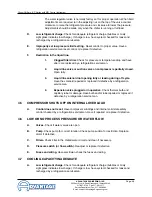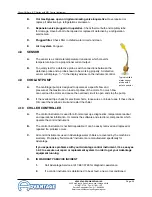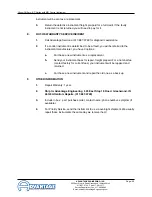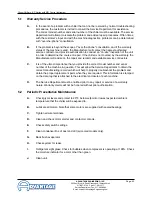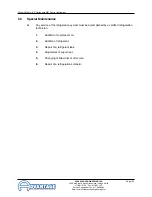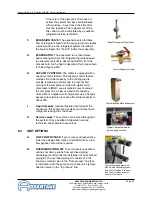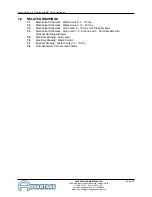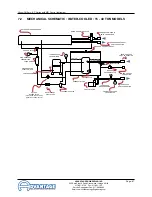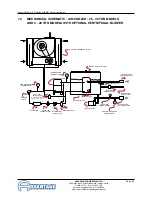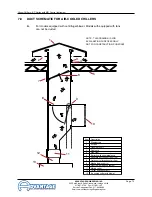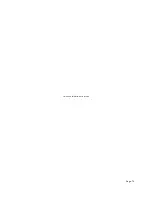
Glycol Chillers : BC Series with MG Control Instrument
Page: 59
ADVANTAGE ENGINEERING, INC.
525 East Stop 18 Road Greenwood, Indiana 46142
317-887-0729 Fax: 317-881-1277
Service Department Fax: 317-885-8683
Email: [email protected]
5.6 CHECKING THE REFRIGERANT CHARGE
A.
All standard chillers are manufactured with thermostatic
expansion valves as the metering device to the evaporator.
B.
All standard chillers have a refrigerant sight glass with a
moisture indicator. To check the refrigerant charge under
normal operating conditions:
1.
Remove the plastic cap covering the sight glass.
2.
Start the chiller and allow system pressures and
temperatures to stabilize.
3.
With the unit operating at 100% capacity (not in the “capacity control” mode)
the sight glass should appear clear with no foam or bubbles evident. If foam or
bubbles are evident, the chiller has suffered from a loss of refrigerant and should
be checked by a qualified refrigeration technician.
4.
The “dot” in the middle of the sight glass is the moisture indicator. It should
appear green at all times. A white or yellow color indicates moisture has invaded
the refrigeration system, which is detrimental to the life of the compressor. The
filter-drier should be replaced by a qualified refrigeration technician.
5.7 PROPER CLEANING PROCEDURE FOR BRAZED PLATE EVAPORATORS
A.
The brazed plate evaporator is made of stamped stainless
steel plates, furnace brazed together with copper based
joints. The complex geometry of the flow passages
promotes turbulent flow which gives high efficiency and
reduces fouling by mineral deposits. Large solids such as
plastic pellets or chunks of mineral deposits will collect
at the water inlet port at the evaporator and restrict flow
through some of the passages. If this possibility exists, the
Manufacturer recommends filters or strainers be added to
the “from process” line. If the evaporator becomes fouled
there are a couple of methods for cleaning.
B.
To begin, remove the piping to the “water in” port at the evaporator. Remove any solids
that have collected at this point. Then back flush the evaporator to remove any solids that
may be trapped between the plates (see back flush procedure below). If there are mineral
deposits adhered to the plates, the evaporator must be back flushed with a mild acid
solution (5% phosphoric or 5% oxalic acid is recommended.) After cleaning rinse with
clear water before returning to service. Continue with step C on the next page.
C.
Back flushing procedure:
1.
Turn off all power to the machine. For chillers with a reservoir tank, drain the tank
to below the evaporator outlet. For chillers without a reservoir tank, drain total
unit.
Sight Glass
Evaporator




